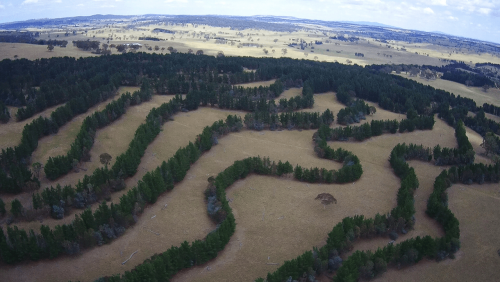A European Perspective on the Journey to a Regenerative Agriculture System

There appears to be a dawning realization that the agriculture sector may be part of the solution to climate change, rather than a problem to be solved, by drawing down and storing carbon in farmland.
Agriculture as a solution
By some estimates we have less than 12 years to save the planet. The degree to which this is accepted as a fundamental truth may vary depending on where you are but there can be little doubt that it has injected a renewed sense of urgency into addressing the challenge of tackling climate change. And it is, arguably, now forcing every sector of our economies to think about how it can reduce or neutralise its carbon and environmental footprint. Agriculture is no different in this respect but there appears to be a dawning realization that the sector may actually be part of the solution to climate change, rather than a problem to be solved, by drawing down and storing carbon in farmland.
This can be explained, at least in part, by the growing interest and adoption across the world of so-called regenerative farm practices, including in Europe. These practices are generally based on planting cover crops, minimum or no tillage farming, effective crop rotations, and the efficient or optimised use of pesticides and fertilizers. Their adoption can lead to improved soil health and farm productivity and profitability, boosting crop quality and yields, improving the resilience of farms to extreme weather events and reducing the propensity for soil degradation and run-off.
Perhaps the most exciting thing about regenerative farm practices, from the climate change perspective, however, is the opportunity this creates to actually draw down and store carbon from the atmosphere in agriculture soils. There are varying estimates about the exact size of this carbon sink but nearly all of them refer to the potential to capture and store billions of tonnes of carbon every year in this way across the world.
Given the benefits of regenerative farm practices, it is perhaps surprising that it has taken so long for the trend to catch-on. Indeed, there are challenges to adoption which arguably start with the investment a grower has to make in transitioning to regenerative farm practices. These range from new equipment to building the required knowledge and successfully managing the risk to farm productivity during the transition process. None of this is easy and if the opportunity provided by regenerative farm practices is to be maximised then we will need to find ways to support growers in exploring, understanding and embarking on this journey.
The recent announcements by Danone and General Mills in support of regenerative farm practices are just a couple of stand-out examples in a growing cohort of companies and non-profit organisations that are looking to support and incentivise growers in making the transition. And these are both helpful and essential.
In Europe, as elsewhere, there is a huge burden of expectation based on farmers to not only produce the safe, healthy, affordable food that we all demand and need, from a food security point of view, but to do so in a way that minimises the impact on the environment. And all at the lowest possible cost. This is all very well but when the cost of doing this is the same or more than a grower receives back in income, then the overall viability of our farm system becomes economically unsustainable. Growers must therefore be given a fair price for the crops they produce for the market and rewarded for the public goods they provide.
In Europe, the commitment to carbon neutrality by 2050 and the all-encompassing Green Deal, announced by the European Commission at the end of last year, potentially offers the opportunity to embrace approaches like regenerative farm practices and to support their broader adoption, (particularly through further reforms to the EU Common Agriculture Policy and the forthcoming publication of its Farm to Fork Strategy). The EU Green Deal can then provide a renewed impetus, policy direction and financial support which can help to accelerate these changes in the farm sector in Europe, helping to make growers one of the heroes in the climate change battle as well as ensuring our food security.
This theme of accelerating change, for a more sustainable food and agriculture system, runs right through the 2020 work program of the Forum for the Future of Agriculture. Together with our partners, which include some of world’s leading Agri-business companies and environmental NGOs, our goal is to identify and bring to the fore workable, scalable and impactful solutions, that help improve farm and food sustainability on a systemic level.
In this respect, we are delighted to be working in partnership with the Chicago Council on Global Affairs, with a specific focus on finding ways for the European Union and the United States to deepen both public and private sector collaboration on farm and food sustainability.
As our Chairman, Janez Potočnik, the former EU Commissioner for the Environment, recently argued, time is short, and the window of opportunity is closing. We must therefore redouble our efforts, reach out across the boundaries and work together on all fronts, to ensure that everyone can maximise their contribution to solving the climate change challenge. Regenerative farm practices, and the promises they hold, may not be a panacea, but they are surely at least part of the solution to building a more sustainable food and agriculture system.